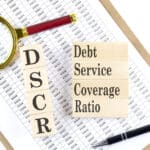Entering the world of home buying can be an exciting yet daunting experience, especially when navigating the complexities of the real estate market.
As you embark on the journey to find your dream home, it’s crucial to be mindful of common mistakes that many first-time home buyers make. By avoiding these pitfalls, you can safeguard your investment and maximize your satisfaction with your purchase.
One of the most significant steps to ensuring a successful home buying experience is thorough research and preparation.
From understanding your finances to grasping the nuances of the local housing market, being well-informed can help you make better decisions throughout the process.
In this article, we will discuss some of the most common errors home buyers make and how to prevent them. And remember, for expert guidance and financing options tailored to your needs, consider consulting Sprint Funding.
Mistake 1: Looking for a home before applying for a mortgage
Although browsing and making a wish list is exciting, being unprepared with your financing can lead to disappointment.
Always know and be honest with your budget. By applying for a mortgage prior to house hunting, you’ll have a clear idea of your purchasing power. Not only does this save time by narrowing down your options, but it also shows sellers that you’re a serious and legitimate buyer.
In order to avoid this mistake, consider the following steps:
- Check your credit score: Take the time to review your credit report andmake thee necessary adjustments to improve your score.
- Get pre-approved: Approach multiple lenders to obtain pre-approval for a mortgage, comparing their offers to find the best fit for your needs.
- Know your affordability: Use online calculators to estimate the monthly payments you’ll be able to afford based on your pre-approval.
Remember, applying for a mortgage first will grant you confidence and clarity when entering the competitive housing market. This proactive approach will ensure a smoother and more enjoyable home buying experience.
Mistake 2: Fixating on the house over the neighborhood
It’s easy to become mesmerized by the design, size, and style of a house. While these features are essential, don’t overlook the importance of the neighborhood it’s in.
A fantastic house in a less-than-ideal community may lead to dissatisfaction in the long run.
Here’s what to consider:
- Amenities: Check places that are easy to access, such as schools, parks, shopping, police stations, hospitals, and public transportation. When visiting potential homes, take a drive around the neighborhood to see if it meets your needs.
- Commute: Your daily commute to work, school, or other activities impacts your quality of life and daily schedule. If you end up living in a house far from these locations, you might regret it later. Try out the commute from the neighborhood during peak hours to get a sense of traffic conditions.
- Safety: Research crime rates and public safety statistics for your preferred location. Check reputable websites or ask a local real estate agent for guidance. An attractive, updated home won’t be enjoyable if you’re worried about your safety.
- Resale value: Examine the neighborhood’s overall residential trends. Are properties well-maintained? Are new developments planned? Answering these questions will help you gauge the future resale value of a house.
Mistake 3: Making decisions based on emotion
When searching for your dream home, it’s natural to feel a strong emotional connection to a property.
But allowing emotions to dictate your decisions can lead to costly mistakes. As a home buyer, it’s crucial to approach the process rationally and objectively.
Key factors to remain objective include:
- Market value: Before making an offer, research the neighborhood’s market trends, and compare the prices of similar properties. This will help you determine if the property’s asking price is fair and reasonable.
- Affordability: Keep your budget in mind throughout the search. Falling in love with a home that stretches your finances can cause financial strain in the long run.
- Neighborhood: A home’s location plays an essential role in its long-term value. Carefully consider factors like amenities, commuting distance, and school districts when evaluating a property.
Example Scenario:
| Feeling Emotional | Making Rational Decisions |
| You visit a beautifully staged home and immediately fall in love. | You evaluate the property based on your budget, needs, and market value. |
| You decide to make an offer on the spot without fully considering the implications. | You analyze the neighborhood and consider alternate properties before making a decision. |
Remember that buying a home is likely one of the most significant investments you’ll ever make. Use facts, data, and reason to guide your decision-making process, rather than simply relying on emotions.
Mistake 4: Talking to only one lender
Talking to only one lender could potentially cost you thousands of dollars over the life of your loan.
Here are some tips to help you find the best deal.
- Create a list of potential lenders: Research multiple lenders, such as banks, credit unions, and online mortgage brokers. Aim to have at least three different options to compare. You can ask friends, family members, or real estate agents for recommendations or search online for reviews and ratings.
- Compare loan offers: Once you have a list of potential lenders, ask each one for a loan estimate. This standardized form will provide you with important information about each loan offer, such as interest rates, monthly payments, and closing costs.
Organize the Loan Estimates in a table to help you easily compare the different offers.
| Lender | Interest Rate | Monthly Payment | Closing Costs |
| Lender 1 | 4.25% | $1,230 | $6,000 |
| Lender 2 | 3.95% | $1,180 | $5,500 |
| Lender 3 | 4.10% | $1,210 | $5,800 |
- Consider other factors: Keep in mind that the best deal is not just about the lowest interest rate. Take into account other factors such as loan term, type of loan, and the reputation of the lender.
Mistake 5: Being careless with credit
 When you’re looking to get preapproved for a mortgage, the lender will take a look at your credit report to ensure everything’s in order. They’ll check it again right before closing to confirm that nothing significant has changed with your finances.
When you’re looking to get preapproved for a mortgage, the lender will take a look at your credit report to ensure everything’s in order. They’ll check it again right before closing to confirm that nothing significant has changed with your finances.
For first-time homebuyers, it’s crucial to understand that any new debts or credit card accounts popping up on your credit report could throw a wrench in the works for your closing and final loan approval.
Unfortunately, many first-time buyers find out about this the hard way.
What to Do
- Pay your bills on time: Late payments can lower your credit score and lead to higher interest rates. Create a budget and payment schedule to stay consistent with your bill payments.
- Avoid taking on new debt: Before buying a home, keep your credit usage low. Avoid making major purchases or taking out new loans that could increase your debt-to-income ratio, potentially raising interest rates or hurting your loan eligibility.
- Dispute any inaccuracies: If you find errors on your credit report, reach out to the respective credit bureau promptly to dispute the information.
Mistake 6: Overlooking FHA, VA and USDA loans
If you’re buying a home for the first time, you might find it tough to scrape together enough cash, especially with home prices going up.
And if your savings for a down payment are on the low side, or if your credit score isn’t exactly top-notch, getting approved for a regular loan can be tricky.
You might think you’re out of options and consider putting off looking for a home because of this.
What to Do
- Consider checking out one of the three loan options supported by the government. These include FHA loans from the Federal Housing Administration, VA loans from the U.S. Department of Veterans Affairs, and USDA loans from the U.S. Department of Agriculture.
Here’s a quick rundown of what each one offers:
FHA loans are insured by the Federal Housing Administration, allowing lenders to offer lower down payment options, as low as 3.5%.
To qualify for an FHA loan, you must have:
- A credit score of at least 580
- A debt-to-income ratio (DTI) below 43%
- Purchase a home that meets FHA appraisal standards
VA loans, backed by the Department of Veterans Affairs, are available to eligible veterans and surviving spouses.
VA loans have several benefits:
- No down payment required
- No private mortgage insurance (PMI) needed
- Competitive interest rates
To qualify for a VA loan, you must have proof of military service and meet specific service duration requirements, as well as typical lending criteria such as income and credit score.
USDA loans, supported by the U.S. Department of Agriculture, are designed to assist buyers in purchasing property in rural or suburban areas.
These loans have various advantages:
- No down payment necessary
- Low-interest rates
- A variety of eligible properties, including single-family homes, new construction, and modular homes
To qualify, you need to have a household income below the area’s median, and the property must meet USDA’s eligibility requirements.
| Loan Type | Benefits | Requirements |
| FHA | Low down payment options | Credit score, DTI, property standards |
| VA | No down payment, no PMI | Military service, income, credit score |
| USDA | No down payment, low-interest rates | Income limits, property location |
Mistake 7: Moving too fast
The biggest mistake people make is not planning ahead enough for their purchase.
Buying a home isn’t always straightforward, especially when you dive into the details of getting a mortgage.
When you rush, you might end up not having enough saved for a down payment and closing costs. Trying to speed through to the closing might also mean missing the chance to fix issues on your credit report that could help you get a better deal on your loan.
What to Do
- Resist the impulse to jump on a deal without thoroughly exploring the market. This includes understanding the neighborhood, local amenities, and average home prices.
To do this, start your search early and create a list of priorities, such as:
- Proximity to work or school
- Safety and crime rates
- Public transportation and commute times
- Availability of shops, restaurants, and entertainment
- Plan your finances. Be realistic about what you can afford, and don’t stretch yourself too thin. An easy way to get a grip on your budget is to follow the 28/36 Rule.
This guideline suggests:
- Spending no more than 28% of your gross monthly income on housing expenses (mortgage, insurance, and taxes)
- Total monthly debt payments (including housing) should not exceed 36% of gross monthly income.
- Avoid rushing through the inspection process. A thorough home inspection can uncover hidden issues and save you from costly repairs down the line. Take the time to understand the report, ask questions, and even get a second opinion if necessary.
Mistake 8: Buying more house than you can afford
If you’re buying a home for the first time, it’s really easy to get swept away by places that might push your budget too far. Stretching your finances too thin isn’t wise, especially with home prices on the rise. It’s crucial to keep a tight grip on your budget.
Going for a house that’s more than you can afford can lead to trouble, like the risk of losing your home if money gets tight. It also means you’ll have less wiggle room in your monthly budget for other expenses. Being “house poor” means you might have to give up on other things that matter to you, like saving for retirement, your child’s college fund, or even a dream vacation.
What to Do
- Don’t stretch your budget too thin. When you’re searching for a house, it’s easy to get caught up in the excitement and overlook your budget.
Falling in love with a larger, more expensive property you can’t comfortably afford can lead to potential financial stress down the road. Instead, focus on finding a house within your affordability range to maintain a comfortable lifestyle.
- Stick to the 28/36 rule. This rule states that your monthly mortgage payment should not exceed 28% of your gross monthly income, and your total monthly debt (mortgage, credit cards, student loans, etc.) shouldn’t exceed 36% of your gross income. Adhering to this rule can help you maintain a healthy financial situation.
- Consider unforeseen expenses. Your financial responsibilities do not end with your mortgage payment. Make sure to factor in property taxes, insurance, utilities, maintenance, and potential emergencies. By addressing these costs within your budget, you’ll have a clearer idea of the true costs you’ll be responsible for when purchasing a house.
- Get pre-approved and know your limit. Before beginning your house hunt, get pre-approved for a mortgage loan. This process entails a comprehensive evaluation of your credit and financial information, which allows a lender to determine your loan eligibility.
With a pre-approval letter in hand, you’ll know your spending limit, be taken more seriously by sellers, and avoid the disappointment of finding and falling in love with a house beyond your means.
Mistake 9: Draining your savings
 When buying a home, avoid draining your savings, as it can lead to financial instability. You should strike a balance between the initial costs and maintaining a financial cushion for emergencies.
When buying a home, avoid draining your savings, as it can lead to financial instability. You should strike a balance between the initial costs and maintaining a financial cushion for emergencies.
What to Do
- Assess your financial situation: Before making any home purchase, have a clear understanding of your current financial standing. Calculate the total amount of savings, investments, and emergency funds you have. This will help you gauge how much you can afford without draining your savings.
- Consider various expenses: Apart from the down payment, there are various other expenses you will need to cover when buying a home.
These may include:
- Closing costs
- Home inspection fees
- Moving expenses
- Immediate repairs and renovations
- Property taxes and insurance premiums
- By keeping these costs in mind, you can avoid depleting your savings during the home buying process.
- Set a comfortable down payment: While it might be tempting to make a larger down payment to lower your monthly mortgage payments, doing so could deplete your savings. Aim for a down payment that is both comfortable for you and in line with your broader financial goals.
- Avoid overspending: It’s easy to fall in love with a house that is beyond your budget. However, stretching too far financially can lead to unintended consequences, such as having to cut back on other important expenses or not having enough funds for emergencies. Keep your budget in mind and stay within a price range that won’t strain your finances.
- Have a contingency fund: Emergencies can happen anytime, and it is essential to be prepared. Allocate a portion of your savings as a contingency fund, so you can cover unexpected expenses without jeopardizing your new home purchase or your financial well-being.
By taking these precautions, you can prevent draining your savings and ensure a more secure financial future while enjoying your new home.
Mistake 10: Assuming you need a 20 percent down payment
While it’s true that a larger down payment can help you secure better mortgage terms, it’s important to remember that there are other options available.
In recent years, mortgage lenders have become more flexible in offering loans with lower down payment requirements. Programs like FHA loans and VA loans often have down payment requirements of less than 5 percent.
Additionally, some credit unions and local banks provide first-time homebuyer programs with reduced down payment requirements.
What to Do
- Speak with multiple lenders – Each lender has different loan programs and eligibility requirements. Do your due diligence by checking with various lenders to find the best-fit program for your situation.
- Check for first-time homebuyer programs – Your state or local government may offer assistance programs with lower down payment requirements. Example: Customer Assistance Programs (CAP) provide grants.
- Consider saving an emergency fund – Before purchasing a home, it’s important to have an emergency fund in place to cover unexpected expenses. This will help you avoid becoming house poor and ensure you’re financially prepared to be a homeowner.
Remember, you don’t have to wait until you have a 20 percent down payment saved up to buy a home. By exploring alternative options and programs, you can make informed decisions on the best financial path toward homeownership.
Mistake 11: Missing out on assistance programs
Assistance programs can be a great resource for new homebuyers, providing financial aid and valuable support throughout the home buying process.
But many home buyers are unaware of these programs, or simply overlook them when searching for a new home.
What to Do
Don’t miss out on these resources that can ease the financial burden of homeownership.
To help you, here’s a breakdown of some common assistance programs and what they have to offer:
- Down payment assistance programs: These are designed to help you make the initial payment on your new home. They might include grants, deferred payment loans, or zero-interest loans.
- To find a program in your area, research local government or housing agency websites.
- First-time homebuyer programs: If this is your first time purchasing a home, you might be eligible for special programs that offer financial assistance, education, and guidance. These programs can include low-interest loans, access to HUD homes, or assistance with closing costs.
- Low-income assistance programs: These are targeted at buyers with low income levels and can come in the form of grants, affordable housing, or low-interest loans. Discover what’s available in your area by checking out your local housing agency or HUD’s website.
Consider the following list of resources where you can find more information on assistance programs:
- Dept. of Housing and Urban Development (HUD)
- National Council of State Housing Agencies
- Local government websites: They often have sections dedicated to housing and assistance programs.
- Real estate agents: Choose an agent with knowledge of local programs who can guide you through the process.
Mistake 12: Not negotiating a homebuyer rebate
Home buyer rebates come from the real estate agent’s commission and can put money back in your pocket. Neglecting to negotiate could cost you a lot.
As a buyer, you’re typically not responsible for covering the agent’s commission. However, this doesn’t mean you shouldn’t try to get a part of that commission as a rebate.
Here’s a simple breakdown of the savings you could achieve:
| Real Estate Agent’s Commission | Homebuyer Rebate (%) | Potential Savings |
| $15,000 (assuming 3% commission) | 1% (Rebate rate) | $1,500 |
| $15,000 (assuming 3% commission) | 1.5% (Rebate rate) | $2,250 |
| $15,000 (assuming 3% commission) | 2% (Rebate rate) | $3,000 |
Here are some steps to help you negotiate a homebuyer rebate effectively:
- Research: Before you start negotiations, research homebuyer rebates in your area. In some states, they’re prohibited or heavily regulated, so it’s important to know your local laws and regulations.
- Choose your agent wisely: Look for a real estate agent who is open to offering a rebate. Some agents advertise rebates on their websites, while others might negotiate if you ask.
- Request a written agreement: Once you’ve agreed on a rebate with your agent, ensure it’s included in the written contract or buyer’s agreement. This can help protect you from misunderstandings or disputes later on.
Mistake 13: Ignoring Moving and Other Upfront Costs
 Consider not only the purchase price of the home, but also the additional costs that come with moving and settling in.
Consider not only the purchase price of the home, but also the additional costs that come with moving and settling in.
Being aware of these expenses can prevent financial stress and surprises along the way.
Here are some of the common moving and upfront costs often overlooked by homebuyers.
- Moving Expenses: Depending on the distance and quantity of belongings, professional movers’ fees can vary widely. Remember to budget for packing materials, moving truck rentals, and other costs that might be applicable to your specific moving needs.
- Home Inspection: It’s wise to have a thorough home inspection conducted before buying a property. This can uncover potential problems and help ensure you’re making an informed decision on the purchase. Home inspection fees typically range from $300 to $500, but the cost may vary.
- Closing Costs: Generally, closing costs can account for 2% to 5% of the home’s purchase price. These costs may include appraisal fees, title insurance, loan origination fees, and various other expenses.
- Utility Set-up: Setting up utilities in your new home may require small deposits or activation fees that should be incorporated into your budget.
- Property Taxes and Homeowner’s Insurance: Alongside the mortgage payment, you will likely need to account for property taxes and homeowner’s insurance – both of which can be substantial expenses, depending on the location and value of the home.
Mistake 14: Overlooking the hidden costs of homeownership
Costs in buying a house can be higher than you might expect. If the initial shock of your monthly mortgage payment wasn’t enough, wait until you tally up all the other expenses that come with homeownership.
As a newbie to owning a home, you’ll need to budget for things like property taxes, homeowners insurance, utility bills, and just the regular maintenance and upkeep that any home requires.
When you add it all up, you could be looking at spending thousands extra each year on taxes, insurance, and keeping your home in good shape.
Without a bit of extra room in your monthly budget or a solid emergency fund, these additional costs can quickly turn your financial situation sour if you’re not ready for them.
Here are some hidden costs that can come with your house buying:
1. Property Taxes
Property taxes are annual or semi-annual payments that you make to your local government based on the assessed value of your property.
These taxes can vary greatly depending on your location. To estimate your potential property tax burden:
- Look up the local tax rate in your area.
- Determine the assessed value of the home you’re considering.
- Multiply the tax rate by the assessed value to calculate your annual property tax bill.
2. Homeowners’ Insurance
Homeowners’ insurance protects you against losses due to accidents, natural disasters, and other unforeseen events.
While it’s not always required by law, most mortgage lenders will insist on it. Factors that affect your insurance premium include the home’s age, location, and total value.
Make sure to shop around for the best insurance rates, as the price can vary significantly between providers.
3. Maintenance Costs
Homeownership comes with the responsibility of maintaining your property, and these expenses can add up quickly.
What to Do
- Set aside a home maintenance fund that covers at least one year’s worth of maintenance costs.
Have a Smooth Home Buying Journey
By considering these hidden costs of homeownership, you can better prepare for what lies ahead and make informed decisions when purchasing your new home.
Remember, it’s always best to be aware of all the expenses involved in owning a property to prevent any financial surprises.
For assistance in navigating through the financial aspects of your home purchase, contact Sprint Funding.





